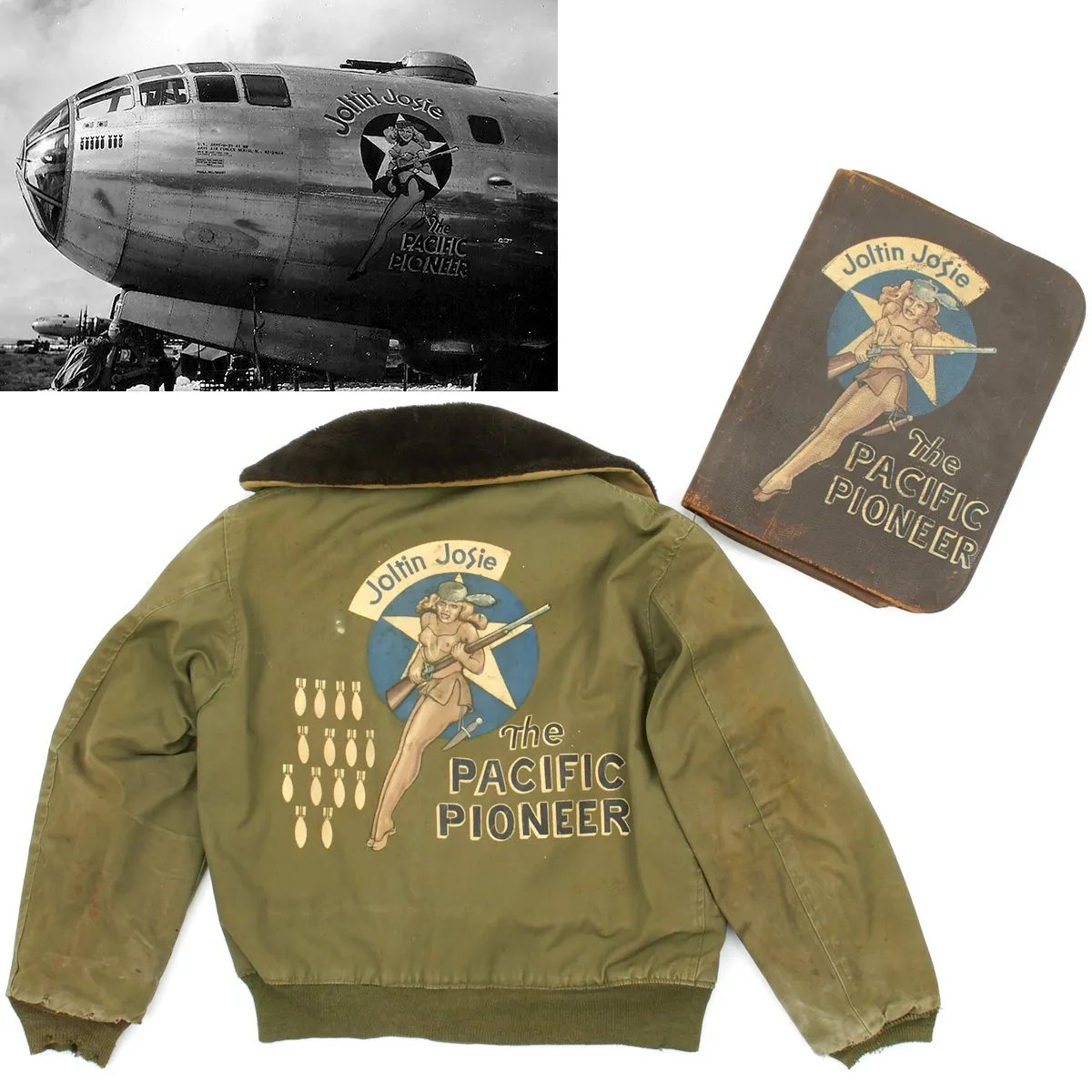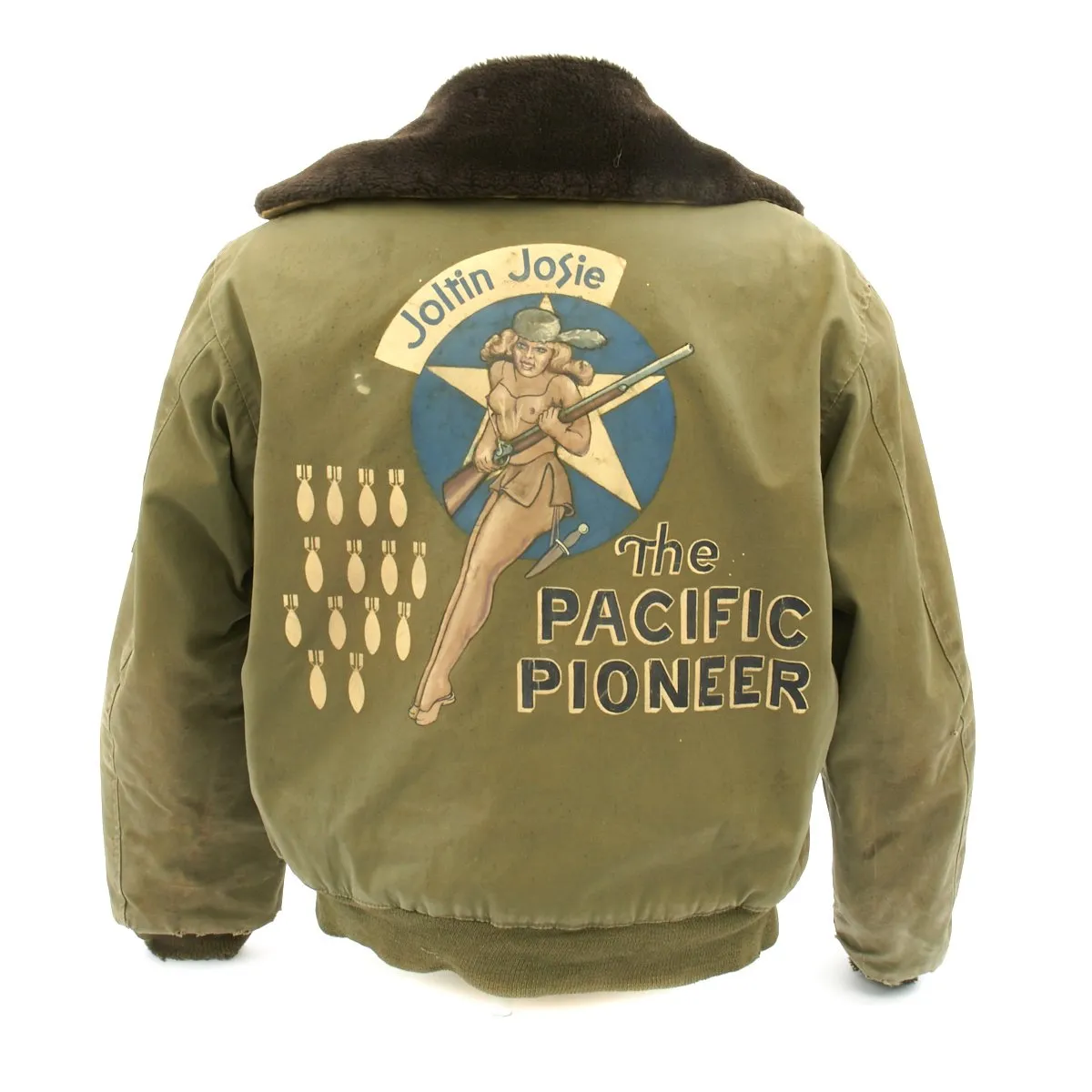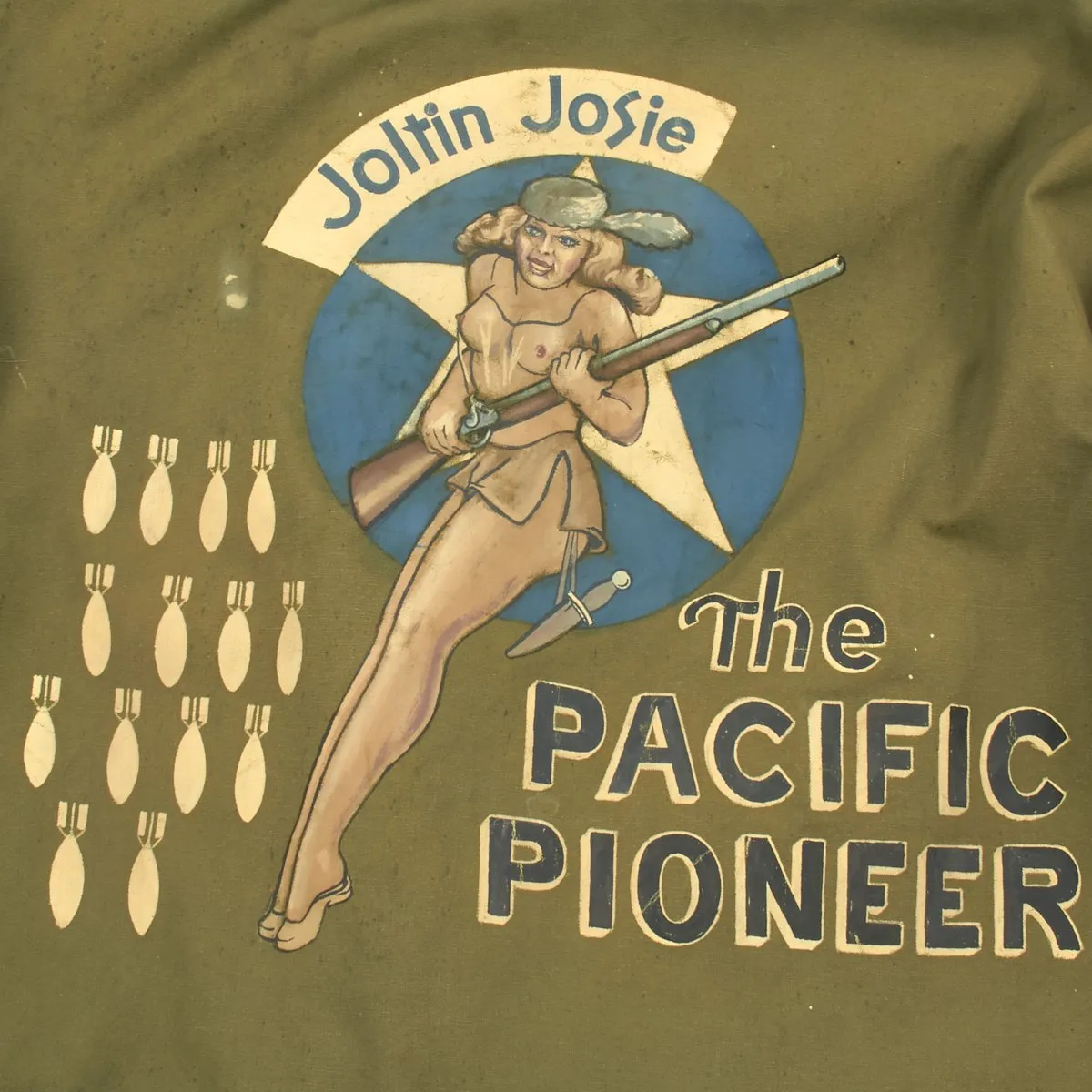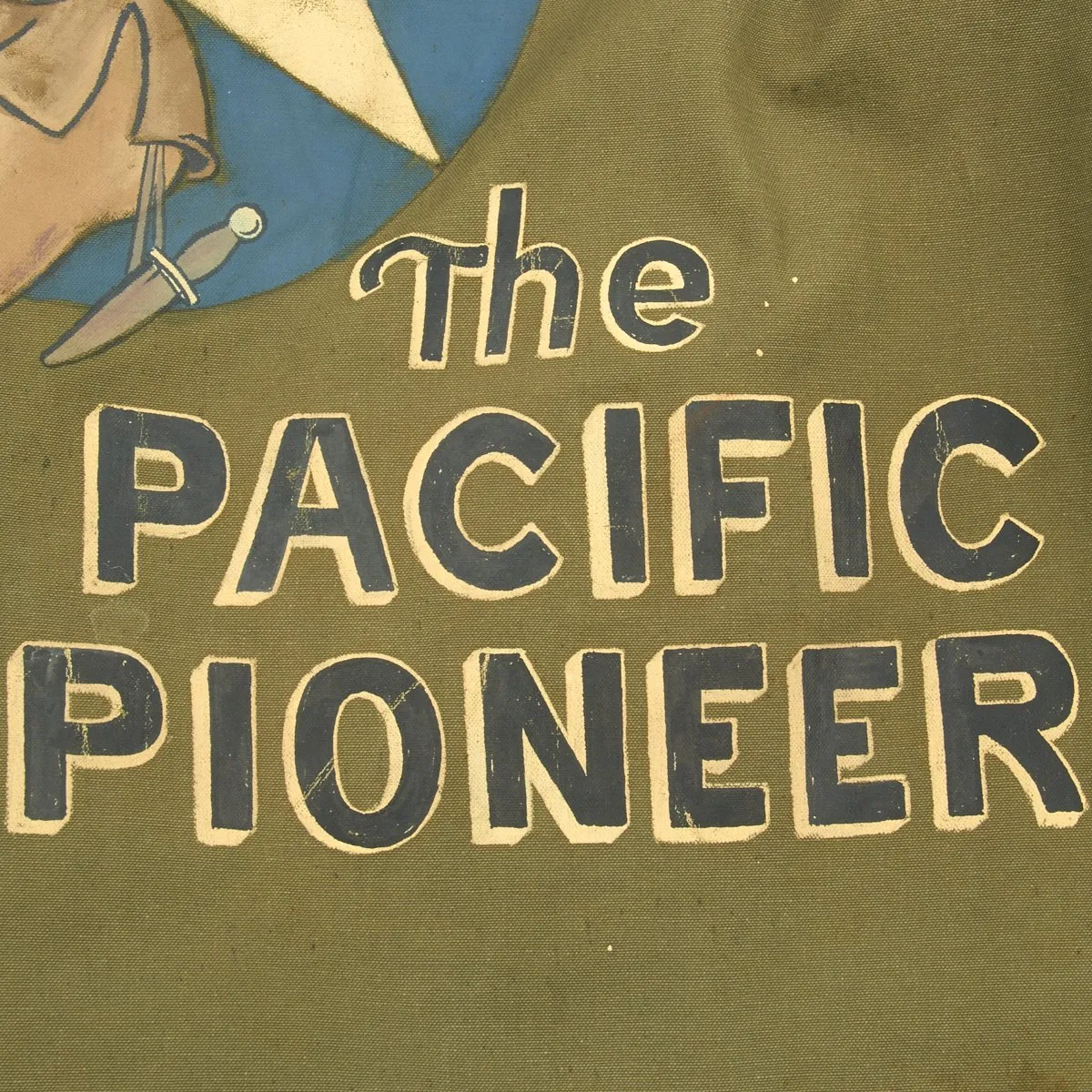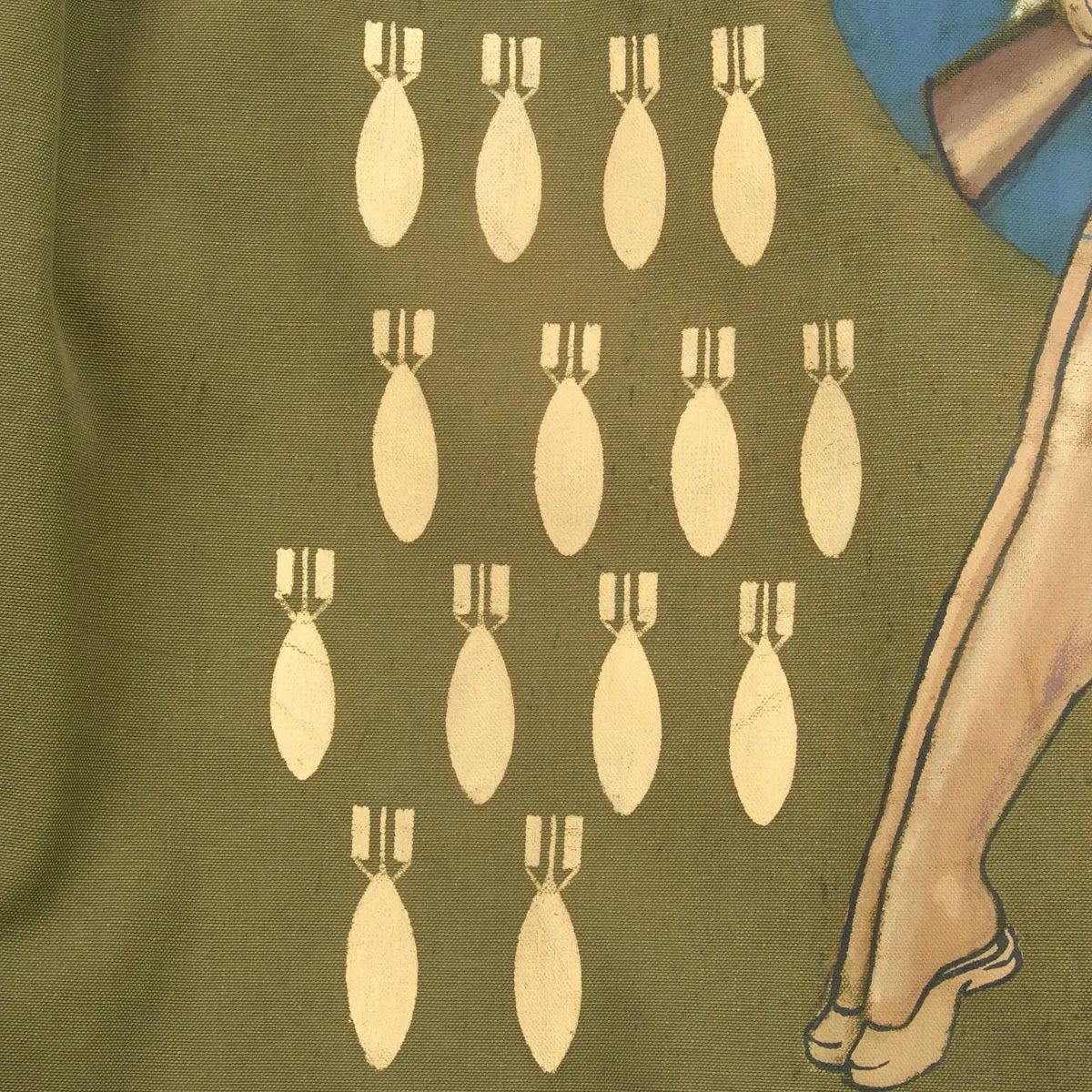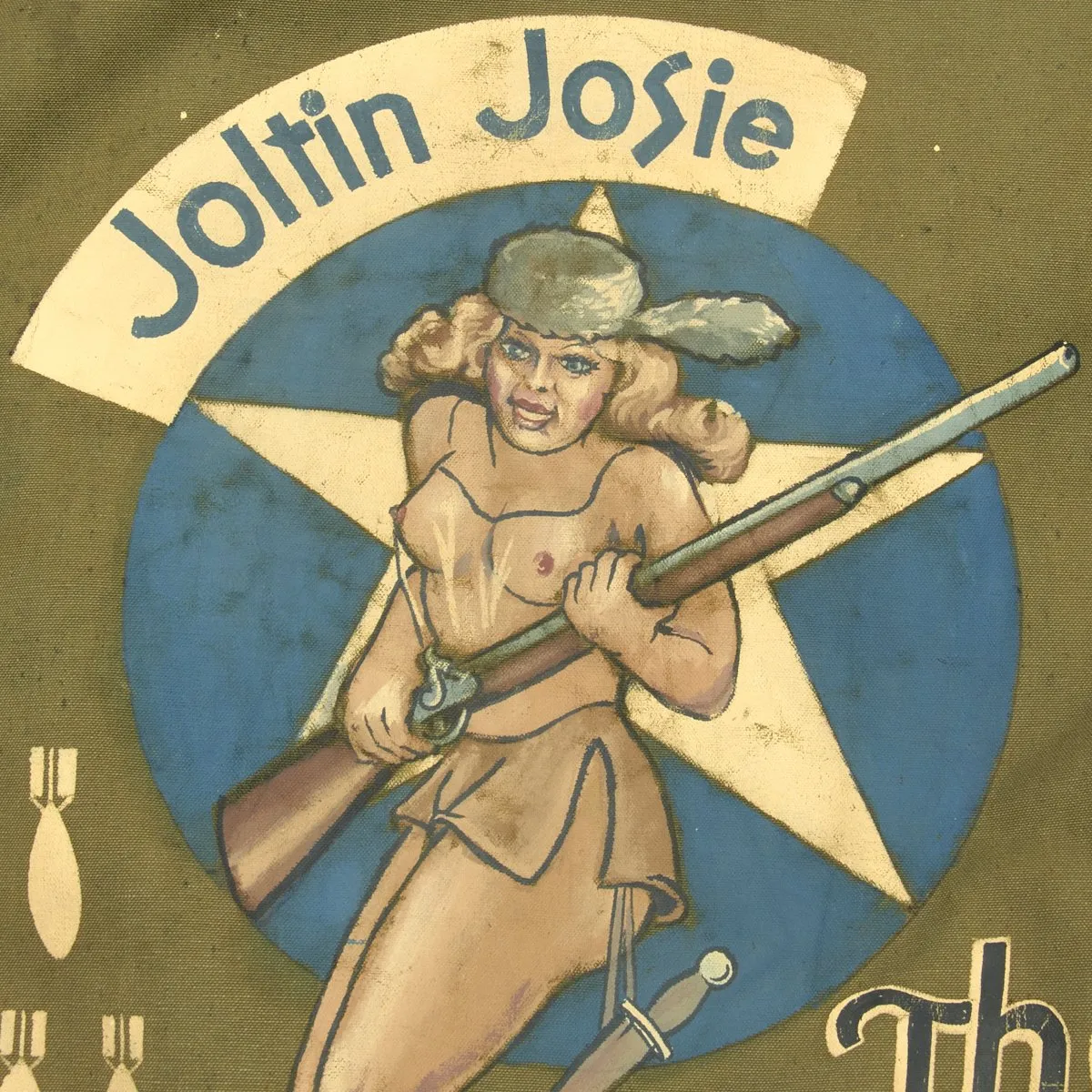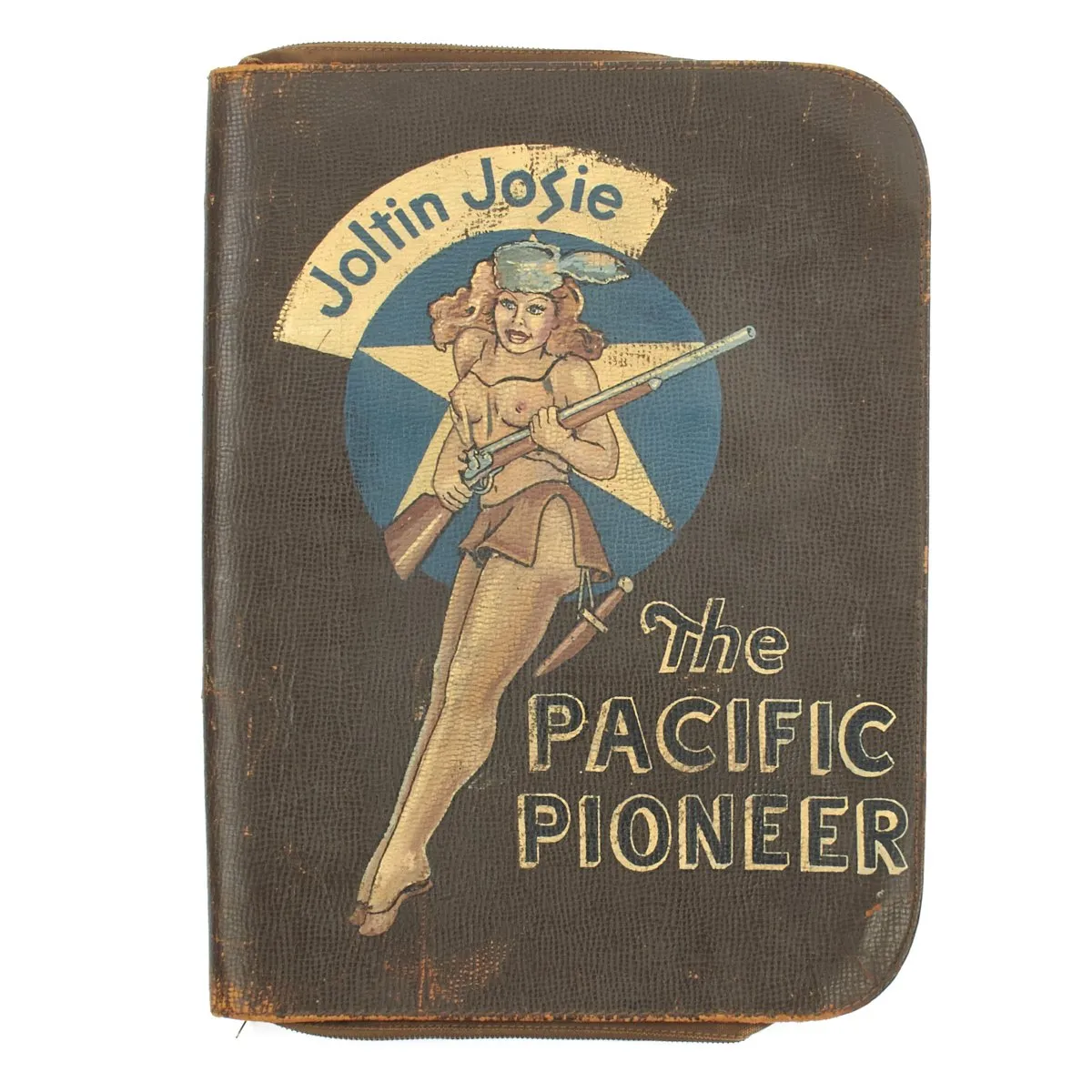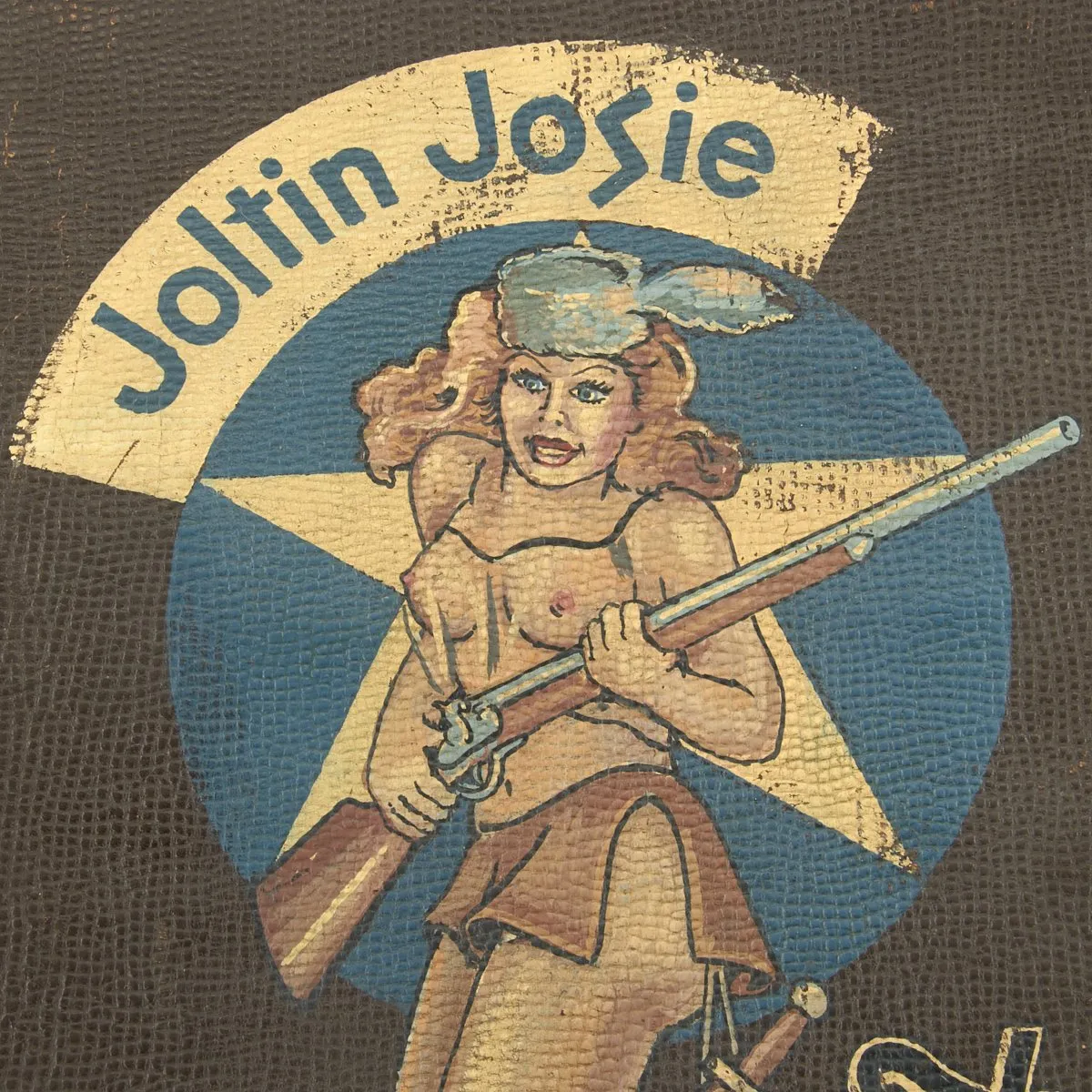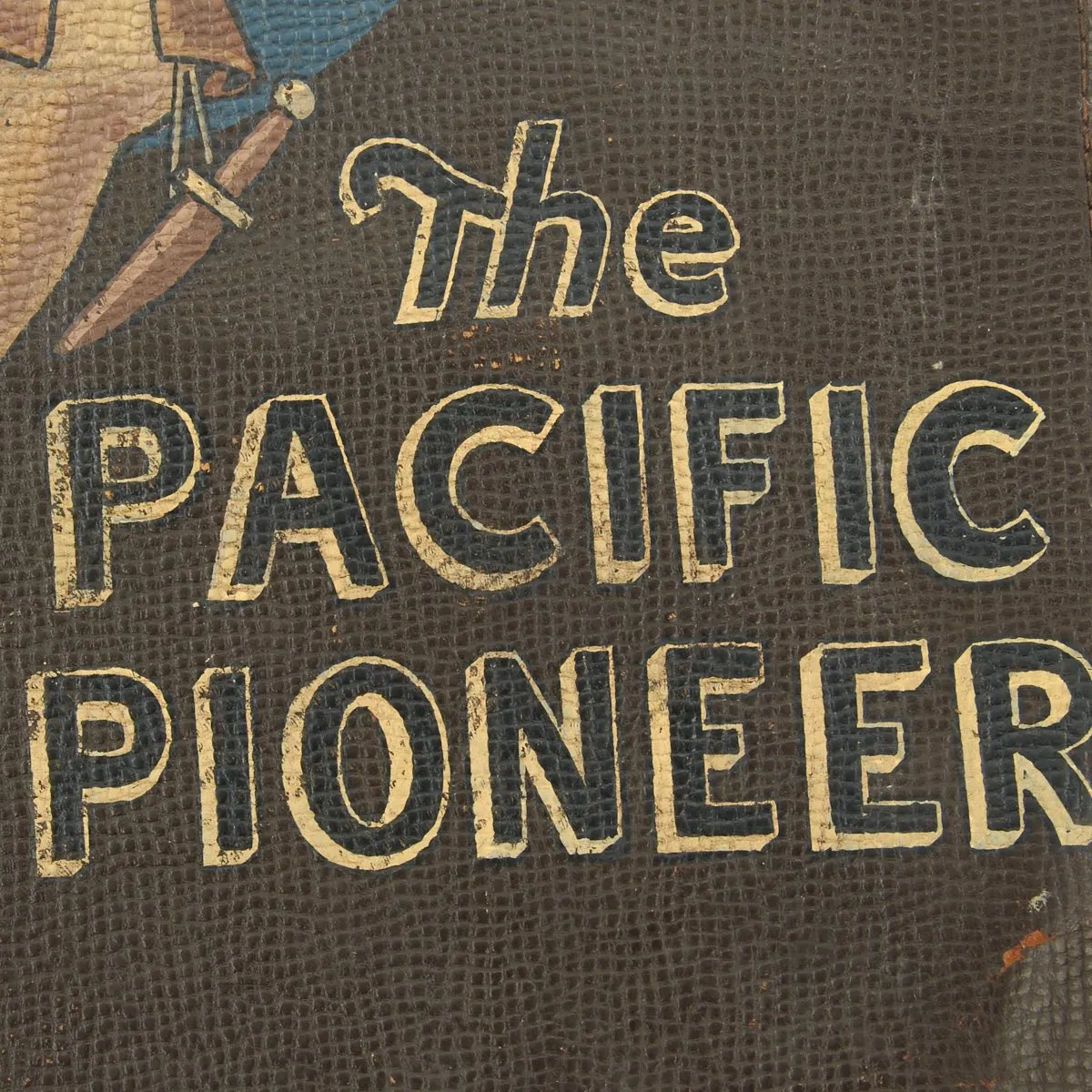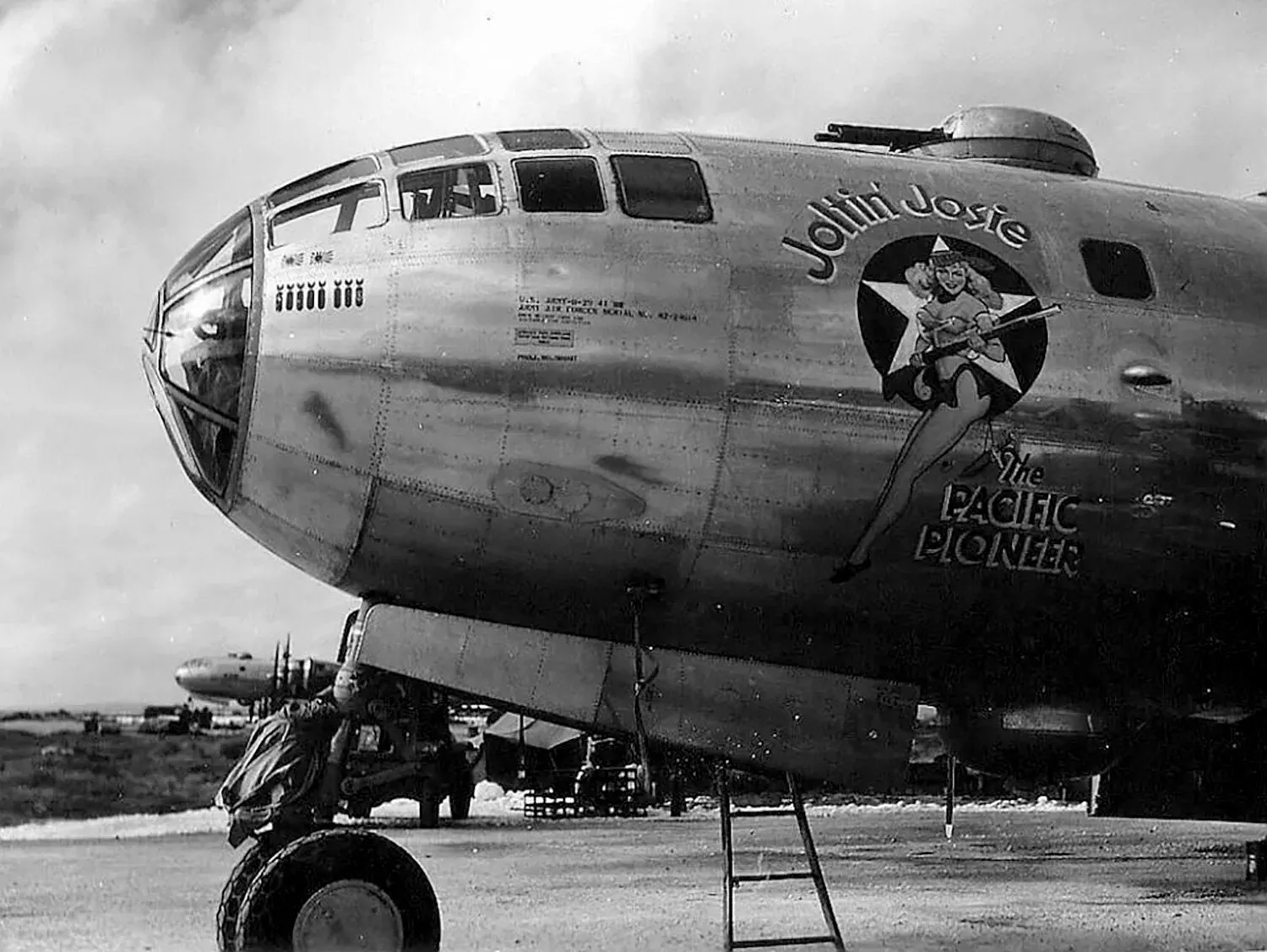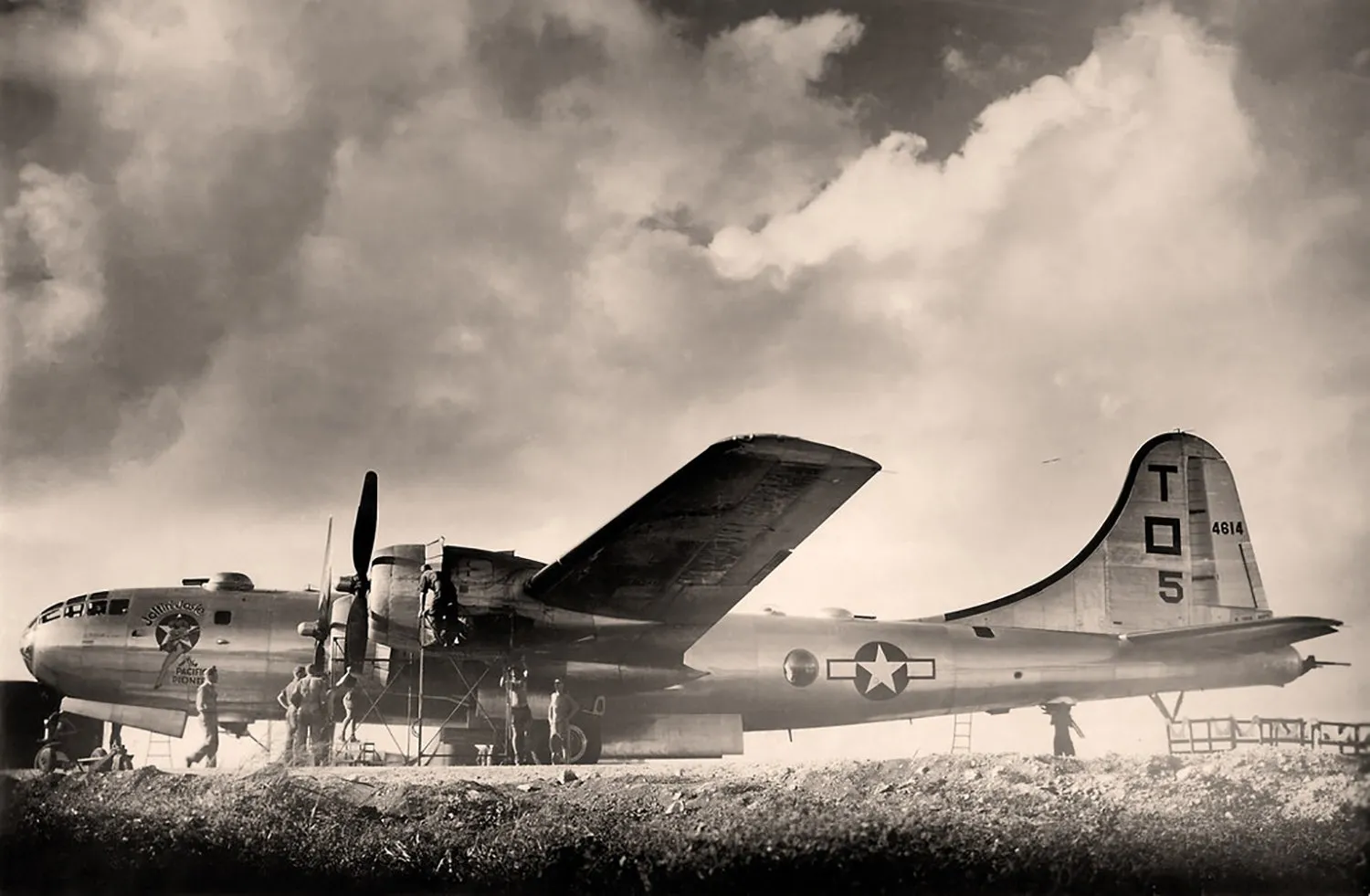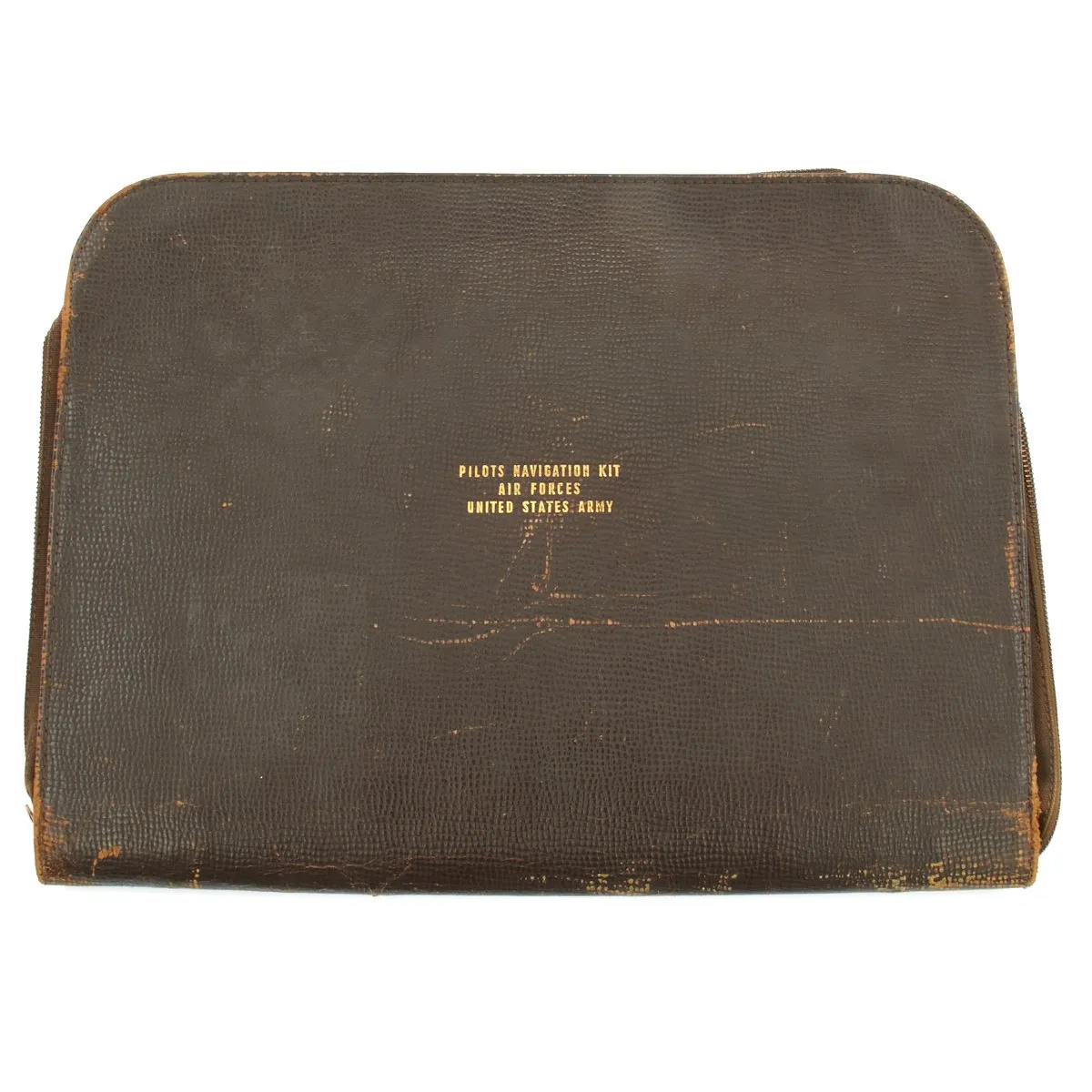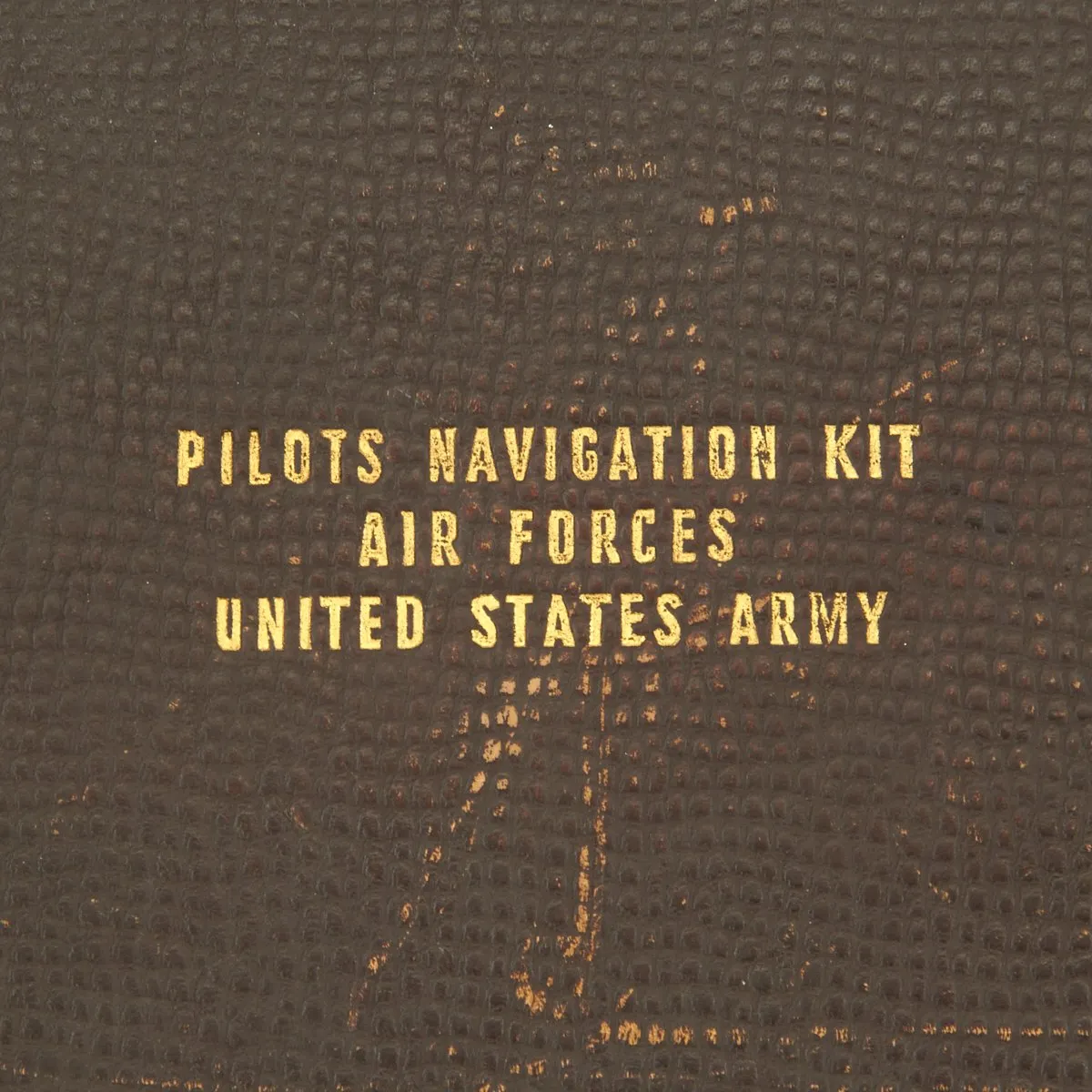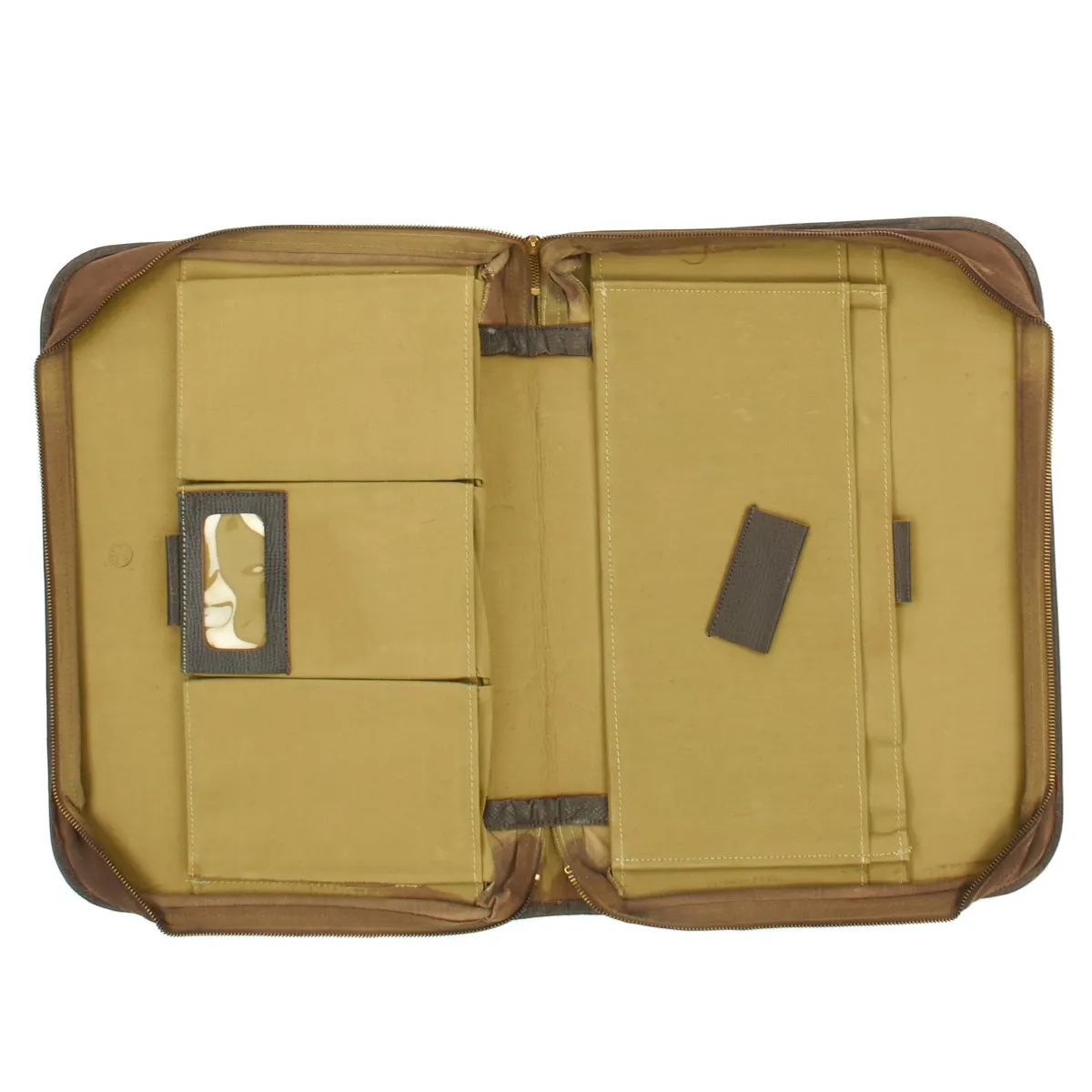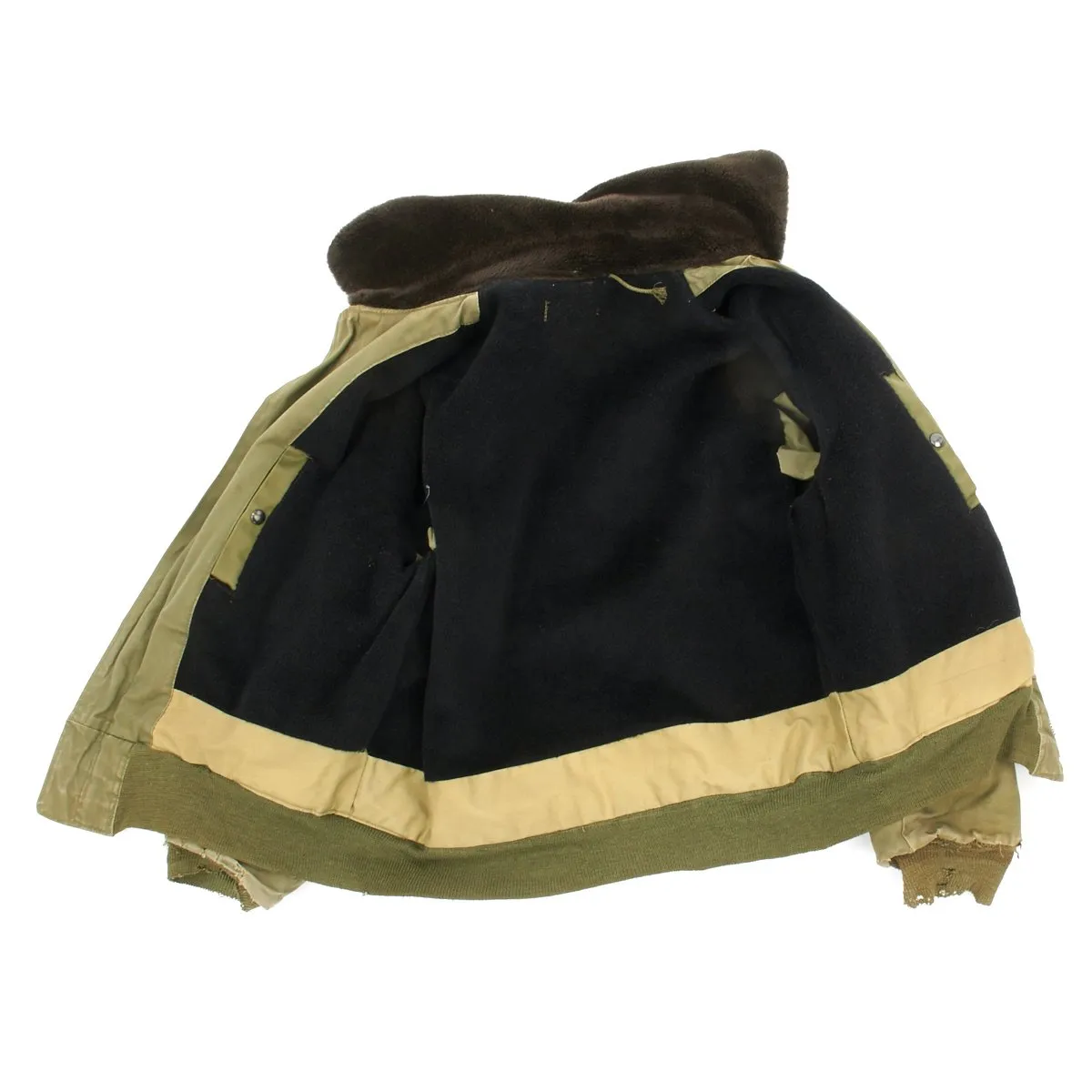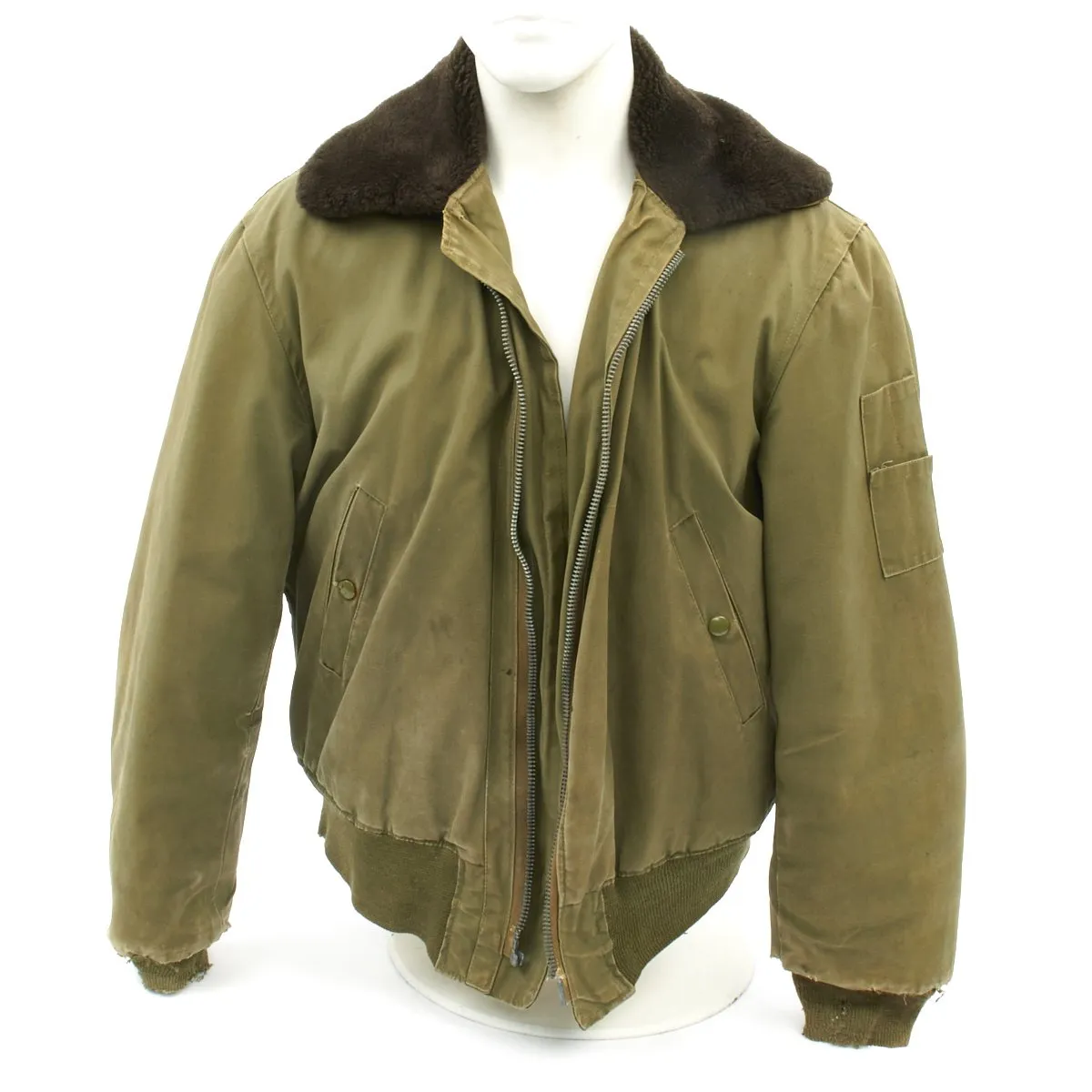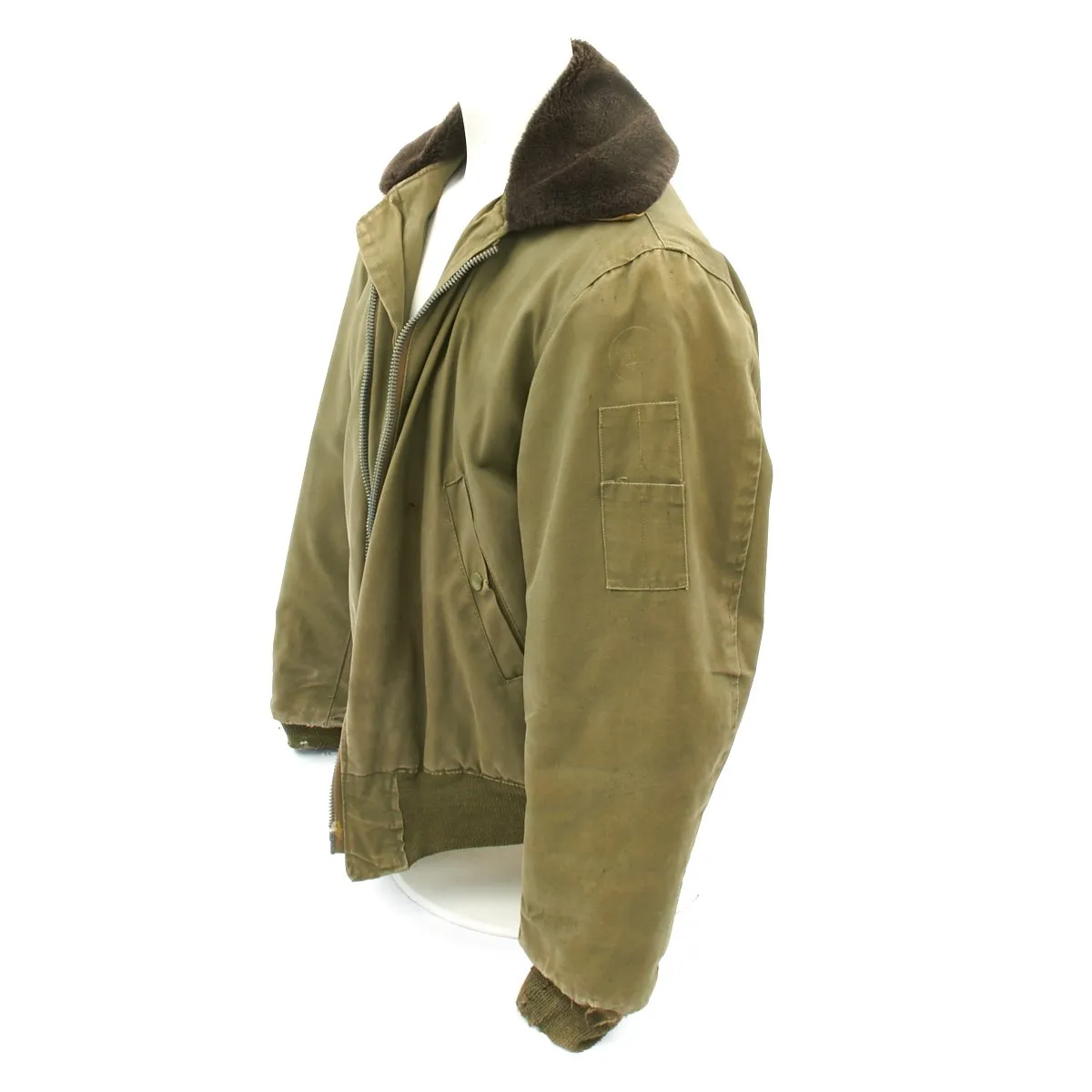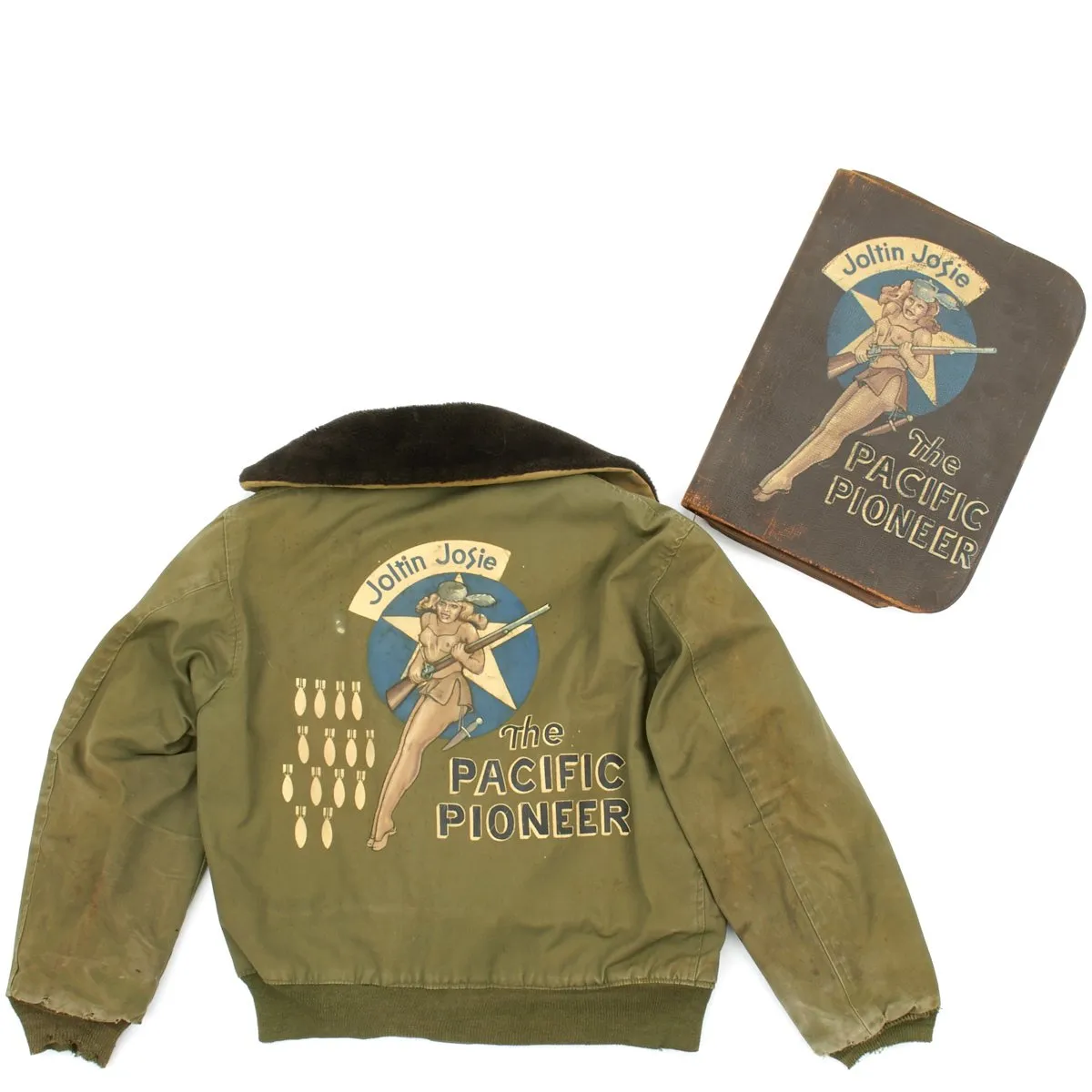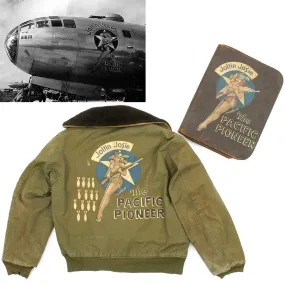Original Item: One-of-a-kind. Incredible Joltin' Josie the Pacific Pioneer painted B-15 Jacket with painted Navigator Case attributed to the pilot of the "Joltin' Josie", Major Jack Catton. Major Catton's aircraft was a B-29 (42-24614) attached to the 873 Bomb Squadron, 498th Bomb Group, 73rd Air Wing. On October 12, 1944, "Joltin' Josie" led the vanguard of the 73rd Wing to Saipan in the Marianas. Major Catton as pilot of Joltin' Josie also lead the first wave of B-29's on the first American bombing raid on Tokyo. Also included with this grouping are pages and pages of additional research including copies of pages from the book Point of No Return by Wilbur H. Morrison which frequently mentions both the plane and Major Catton.
This Boeing B-29 Superfortress is alleged to have been named for Catton's wife; and the "Pacific Pioneer" was added by Brig. General Haywood S. Hansell, Jr. who flew in the commander's seat on the mission to Saipan. The "Joltin' Josie" took part in many missions over Japan and was eventually destroyed when burst it into flames and fell into sea at Magicienne Bay, Tinian Island, Northern Mariana Islands, shortly after takeoff, on April 1, 1945 with a loss of all its crew (Major Catton was no longer attached to the aircraft).
This wonderful B-15 jacket has been painted with a sexy yet patriotic image of a typical pinup girl of the period dressed (or is she undressed) in see-through underwear, wearing a coonskin cap and armed with a musket and knife. Fourteen bombs, indicating bombing missions, are painted alongside the central image. The jacket itself is in very good condition with the usual wear to the jersey cuffs and waistband, the zipper is missing the pull, and some light soiling. The nomenclature tag has been removed. A leather navigators' case has also been painted with the plane's nose art. A truly historic jacket, wonderfully representative of the nose art of the period, that is attached to one of the most famous B-29 bombers of World War Two.
Joltin' Josie 42-24614 A late B-29-40BW, powered by four 18-cylinder Wright engines each of 2,300 H.P., producing a maximum speed of 350 MPH. Maximum bomb load was 20,000 pounds. Armament was either eight or ten .5-inch machine guns in remote control turrets, plus two .5-inch guns and a 20 mm cannon in tail turret. Wing span of 141 ft., 3 inches, length 99 feet.
On October 12, 1944, "Joltin' Josie" led the vanguard of the 73rd Wing B-29s to Saipan in the Marianas. "Joltin' Josie" was named for the wife of airplane commander Major Jack Cation. "Pacific Pioneer" was added by Brig. General Haywood S. Hansell, Jr. Before its takeoff from Mather Field, Sacramento, for the long hop to Hawaii, landing at Hickam Field, Admiral Nimitz came to see the first B-29 in the Pacific. "Josie" landed on the former Japanese Aslilto Air Base, now renamed Isley Field. Once on the ground, men of all services crowded around the new aerial weapon that would end the war soon, without an invasion of Japan. For the Marines and Army men who had battled for Saipan's rocky shores at great cost, it was a new hope.
"Joltin' Josie" was flown by 873 bombardment Squadron, 498 Bomb Group, 73 Wing. She was the first to land on Saipan and took part in the first Tokyo raid as well as numerous attacks on Japanese mainland industrial sites. . The 20th Air Force flew more than 100 million miles on 380 combat missions. Its B-29s released 91% of all bombs dropped on Japan, a total of 147,000 tons -- nine times as many tons as were dropped on NSDAP Germany. As many as 512 B-29s were lost overseas and 576 fliers were killed and over 2,400 were missing in action. Many of the MIAs were killed by the Japanese after bailing out over Japan. The B-29s leveled 40 percent of the built-up area of 66 principal cities and 602 major war factories were destroyed. Fire raids destroyed 2.3 million homes; 330,000 civilians were made homeless and 21 million displaced.
While the atomic bombs gave the Japanese an excuse to surrender when they did, the effect o the sustained B-29 bombing raids would have forced them to the same conclusion in a few more weeks or months.




